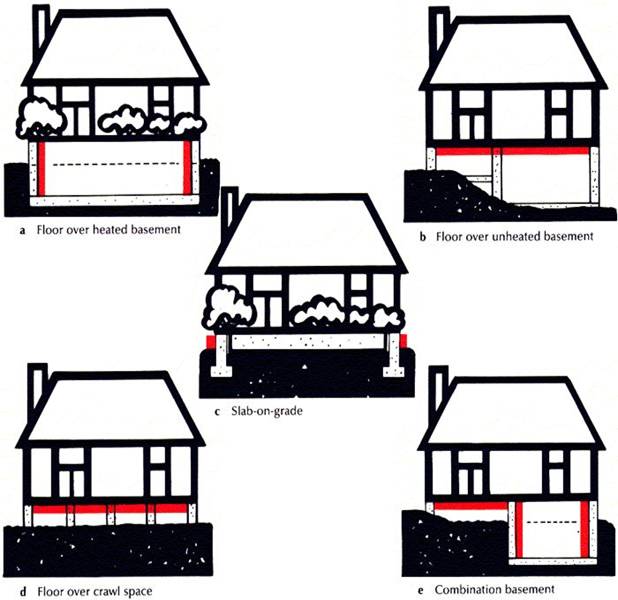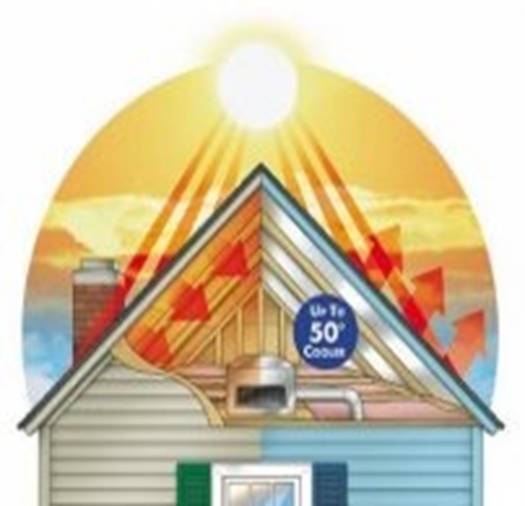Budget Investments - Floor or Roof Insulation
by Mark Row
 The Importance of Insulation
The Importance of Insulation
Insulating your home from head to toe should be on top of your list of priorities, simply due to the fact that proper insulation can have many positive effects on your everyday life, starting from lower electricity bills and thus lower carbon footprint (due to the energy saved) but also the increased quality of life. If your home is adequately insulated, you won’t have to worry about using an extra blanket over the winter or having your air condition constantly on during the summer. However, although very important, insulation can be a very expensive investment since insulation materials but also the installation process (depending on the area being insulated) are never cheap due to the fact that some works can also include serious alterations in your constriction, especially if you are dealing with older homes or hardly accessible places that need to be covered with insulation. This is why people usually need to make choices between insulating one area or the other. We will herewith revise some budget investments – floor or roof insulation, in order of helping you make up your mind, in case you are dealing with limited funds.
About Floor Insulation
Floor insulation will firstly depend on the type of floor you are dealing with. There are two basic types of floors – solid ground floors (which are laid directly onto the ground) and suspended timber floors (which are supported by timber beams and consisted of timber floorboards).
Solid ground floors are best insulated with some kind of rigid insulation, such as polystyrene or phenolic insulation boards which can easily be bonded to the concrete, flat surface of the floor. This floor insulation type has very high R value and can efficiently contribute to your home’s thermal regulation. On the other hand, suspended timber floors are usually insulated with some type of fibre insulation such as mineral or glass wool (or more eco-friendly sheep wool which is added to the timber joists in case there is no access to the floor from below (from a basement for example), added below the floorboards (which will include lifting the boards and adding insulation between the joists from above) or added from below, if there is an opened access to the floor.

It is important to know that proper floor insulation will not only help you regulate the inner temperature by keeping the cold air beneath your home and trapping the heat inside, but can also support the floor structure and allow it to bear more load. Also, bearing in mind the insulation products used, note that most of them have great acoustic values, meaning that they will also offer a level of soundproofing to your home, which could be a good thing especially if you have a basement beneath.
About Roof Insulation
Now, roof insulation can be somewhat more complicated than previously explained one, simply due to the fact that it mainly depends on the roof structure and that there is more than one type to identify. Different methods and insulation materials are used depending on whether you are having a flat roof (which could have a so called “warm” or “cold” structure, a pitched roof (where there is again a difference between cold and warm pitched roofs) or you have a traditional and natural thatched roof (where there are many subcategories depending on the material it is made from).

Knowing these basic classifications, you should keep in mind the following:
- If you decide to insulate your flat roof internally, you could opt for rock wool insulation, while external insulation could involve using some type of rigid insulation such as polystyrene boards.
- Cold and warm pitched roofs should be insulated with some kind of material that is able to withstand moisture and condensation why you should opt for materials such as mineral or sheep wool or even some type of rigid insulation boards.
- If your countryside house is covered with a thatched roof, bear in mind that the thatch itself has some insulating power, why additional insulation may not be necessary. If this is not the case, you could opt for insulting your thatched roof from above or below the roof rafters. Unlike previously explained cases, here is best to avoid some insulation materials such as mineral wool, but rather opt for some more natural materials such as sheep wool or wood fibre boards.
Which One to Go for?
Now that you are aware of basics on both floor and roof insulation, you should know which one to go for. Of course, our recommendation is to always insulate as much space as you can, since nothing can replace a completely protected and covered home, in the words of energy efficiency. But if you are dealing with a limited budget, here are some useful tips on making the right choice.
The first thing you should consider is whether you have a basement underneath or a loft space under the roof construction. Namely, if you are planning on using your basement space for more than just a storage place, it probably would not be wise to completely cut it off from the rest of your home since this way you will have to additionally warm up the space instead of using the heat exchange with the upper floors. In this case, you are probably better off with insulating your roof and maybe (in due time) insulating your basement walls.
The previously said could also be applied to your loft space. If you are having a pitched roof and a lot of free space under the roof construction, note that it can be transformed into a living space, when we highly recommend that you insulate under the roof rafters since otherwise, it will be almost unbearable to stay in, especially during the summer since, as we all know, the heat travels up, but in this case your loft will also be under the direct influence of steaming sunrays.
Besides, always take into account the work that will have to be performed in order of installing insulation and accordingly estimate the costs. Just try to be practical. If you are dealing with an old, leaky roof that needs to be replaced anyhow that could be the perfect opportunity to install some roof insulation underneath, which can drastically lower your costs. Also, if you are dealing with rotten and damp timber floor, again once the floorboards have been removed, use the chance to add insulation below.
For more information on floor and roof insulation, please read related blog articles and product descriptions on our website. If you have any questions please post them in the comments below.


















































































































